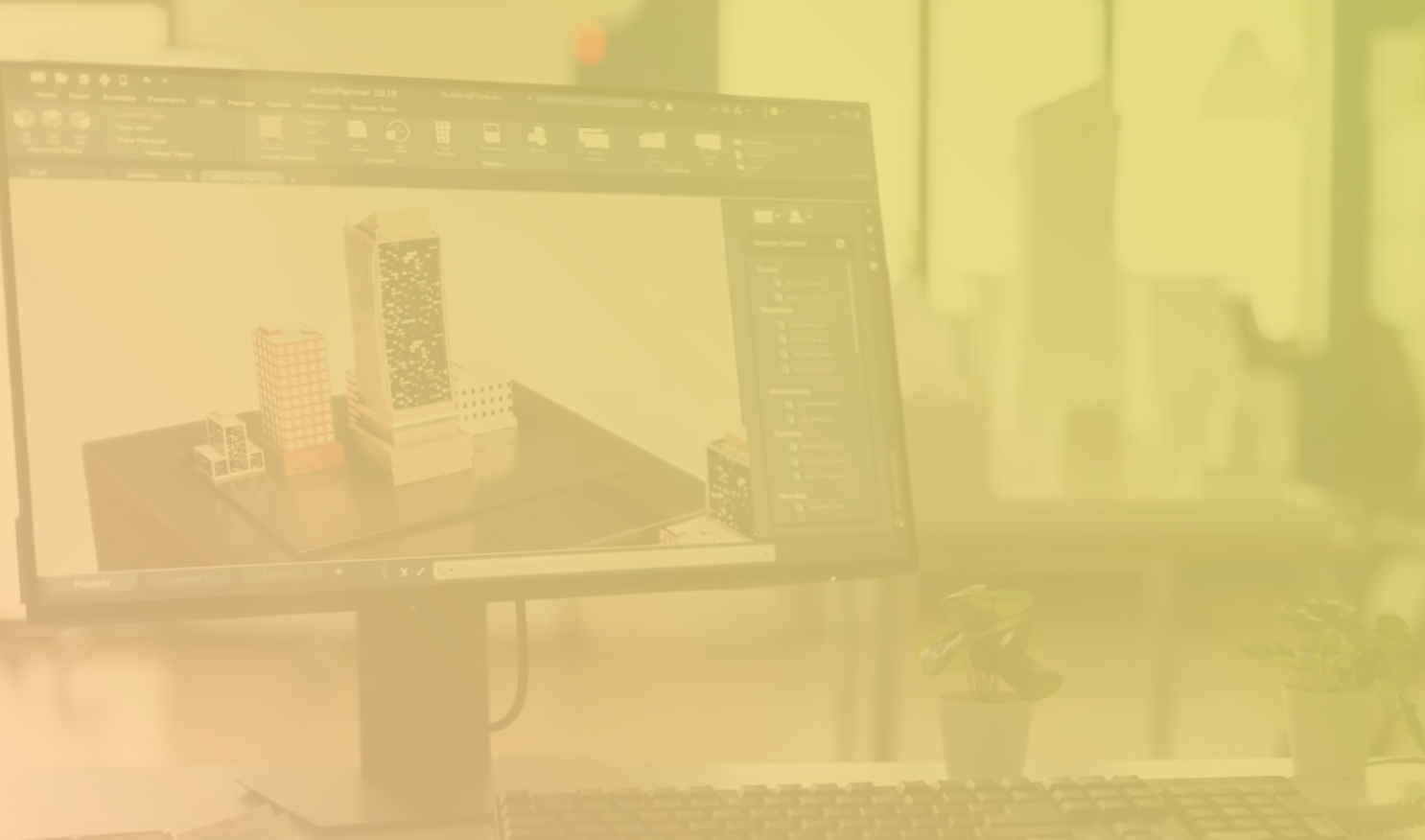


ABOUT THE AUTHOR
Jessica Alcántara Rivera BIM-Research Coordinator
Aranza Ayala Amador Talent Research Program
“We truly believe that innovation in architectural tools must be continuously improving team efficiency while reducing time and enhancing the quality of project delivery.”
Implementation of Building Information Modeling (BIM) in companies
The benefits of BIM implementation are related to work productivity in companies. Have you ever analysed what we must do to implement BIM in our architectural or construction office?
According to the book “BIM and Construction Management”, BIM not only seeks to implement software but also processes and behaviours:
- Behaviours: this methodology facilitates collaborative work at the internal level (between different departments), and the external level (between different agents and companies that are engaged during the life cycle of a project).
- Process: BIM starts from 3D models with non-graphic information that evolves to 4D,5D,6D and 7D throughout the life cycle of the project or infrastructure.
- Instrument: The company that wishes to implement BIM will have as a priority to acquire the specific software to work with. (Structuralia, 2018)
Potential Implementation Strategies
1. Application method: This strategy adds new software to those currently in use. It carries a high risk because it can generate confusion when choosing the most appropriate for each project.
2. Substitution method: this strategy changes traditional systems for the new BIM system without a transitional period.
3. Integration of new processes with existing ones: This not only considers the technology to be implemented but also new behaviors to be developed by the team. (Structuralia, 2018)
Strategy 3 "Integration of new processes with existing ones" process
The best strategy of the above is no. 3 and can be broken down into the following phases:
-
1. Organization analysis
A study of the organization that wishes to implement BIM is carried out; Aspects such as the organizational structure, types of projects, life cycles, products and/or services in its portfolio, procedures, company needs, key people, etc. are identified.
-
2. Selection and prioritization of services or products when implementing BIM
It helps the company to select and prioritize the BIM services or products to be implemented based on strategic, commercial, and technical criteria. This phase is the list of prioritized products and services.
-
3. BIM implementation planning
During this stage, the program of activities is defined and adjusted, and the implementation costs are estimated, as well as the risks. (Structuralia, 2018)
-
4. Execution of the BIM implementation
Here the description of the BIM Implementation Plan will be carried out, some examples of the steps of this plan could be the following: 1. Pilot team selection; 2. Selection of the pilot project; 3. Survey of processes "current status"; 4. Survey of theoretical BIM processes 5. Software evaluation of the market; 6. Selection of software(s); 7. Acquisition of licenses for pilot equipment; 8. Formation of the pilot team; 9. Development of the previously selected pilot project; 10. Updating of the theoretical BIM processes with the experience of the pilot; 11. Documentation of the procedure for the selected product/service.
-
5. Writing other plans
It may be necessary to elevate this implementation from the pilot experience to the rest of the department that is involved in the project.
-
6. Acquisition of licenses and training
In this phase, licenses must be obtained, and training should be estimated in the plans that were implemented in phase 5.
-
7. Hiring new profiles
The company may detect the need to incorporate new positions into its work teams, such as BIM Coordinators or BIM managers.
-
8. Training by departments/product/service units
Licenses will be installed, and training will be given to the necessary people.
-
9. Implementation evaluation
The company will evaluate and generate feedback on the implementation regardless of whether it can repeat the process, to have an immediate source and be able to make the comparison.
-
10. Implementation communication
It will be necessary to carry out the implementation of the communication system both internally and externally (if the communication plan prepared in phase 5 was detailed in this way). (Structuralia, 2018)
Conclusion
Without a doubt, the implementation of the BIM methodology is something that must be thought through carefully, but in the end, the results will be favourable. There are some mistakes that we must avoid at all costs for proper operation, for example, not considering the people involved with the BIM processes, or not following the order of the established steps.
Order and discipline are the keys to a good result, in any aspect and any job, the BIM methodology helps us to be more disciplined when starting an architectural project, bringing order to the people involved, which gives satisfactory results in the project.
References
Structuralia. (23 de Octubre de 2018). Structuralia. Obtenido de https://blog.structuralia.com/como-abordar-la-implantacion-bim-en-mi-empresa
Want to know more about this topic?
Contact us
